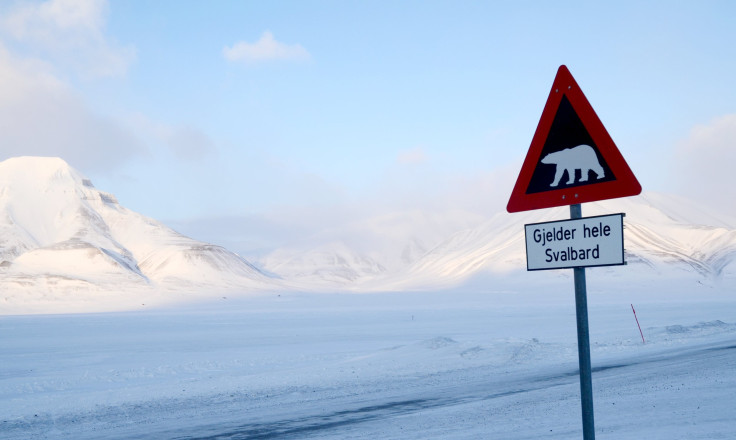Polar Bear Population In Danger? Photo Of Emaciated Animal Ignites Concern Over Climate Change

Photos of an emaciated polar bear and a dead polar bear have gone viral, sparking outrage over the issue of climate change. Many people sharing the images on social media have said the snapshots are proof that global warming is destroying the planet, the Independent reported Monday.
German photographer Kerstin Langenberger posted the photo of the incredibly thin polar bear to her Facebook page Aug. 20, and it recently went viral, generating 22,804 “likes” and 42,053 Facebook shares. Langenberger took the photo on Svalbard, a Norwegian group of islands.
This Shocking Photograph of starving female polar bear Reveals The Reality Of Climate Change http://t.co/DNSXzEeWfq pic.twitter.com/I5dBQaUiD9
— Svein T veitdal (@tveitdal) September 14, 2015“Experts claim the Svalbard population is stable, even rising. Well, here comes my question: How can a population be stable if it consists of less and less females and cubs? How can a population be doing good if most bear will score a body index of 2-3 out of 5? Only once I have seen a bear getting a big, fat 5, but several times I have seen dead bears and bears like this one a mere 1 on the scale, doomed to death,” Langenberger wrote in a caption that accompanied the jarring photo. “I do not have scientific data to prove my observations, but I have eyes to see -- and a brain to draw conclusions. Climate change is happening big-deal here in the Arctic.”
The average global temperature has increased by nearly 1 degree Celsius since 1880, according to NASA. But Ian Stirling, an adjunct professor at the University of Alberta, who has studied polar bears for four decades and works as an ecotourism guide in Svalbard, warned that the polar bear in the photograph was most likely a sick or injured bear, and his emaciated state was probably not due to climate change, Mashable reported.
National Geographic photographer Paul Nicklen snapped a disturbing photograph in 2014 of a dead polar bear in the same region, posting the snapshot to Instagram. In the caption, he wrote that he had found two dead bears in the region and that other groups had found several more dead bears. The bears appeared to have starved to death and had been unable to hunt seals because of the absence of sea ice, Nicklen wrote.
Researcher says global warming may have led to the death of this polar bear. http://t.co/1ctz0OJ14L via @mashable pic.twitter.com/kWrturlzAW
— Jim Roberts (@nycjim) September 8, 2015
© Copyright IBTimes 2024. All rights reserved.






















